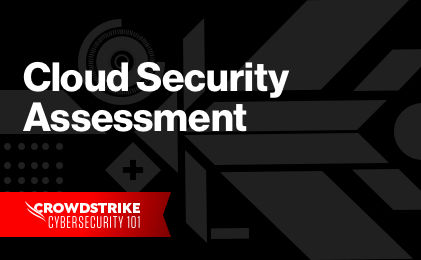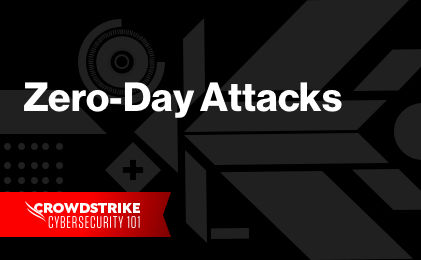What is data loss prevention (DLP)?
Data loss prevention (DLP) is a set of tools and procedures that forms part of a company’s overall security strategy and focuses on detecting and preventing the loss, leakage, or misuse of data through breaches, exfiltration transmissions, and unauthorized use.
Why is DLP important for organizations?
As companies move to a more remote and dispersed workforce and rely more heavily on cloud-based infrastructure, protecting sensitive data becomes more challenging.
As described on the 2023 Global Threat Report underneath, CrowdStrike Intelligence found there was a 20% increase in adversaries conducting data theft campaigns without deploying ransomware in 2022. Instead, adversaries exert additional pressure on victims by leaking some of the data, which can be extremely detrimental to businesses storing sensitive data such as proprietary data or stakeholders’ personally identifiable information (PII).

2024 CrowdStrike Global Threat Report
The 2024 Global Threat Report unveils an alarming rise in covert activity and a cyber threat landscape dominated by stealth. Data theft, cloud breaches, and malware-free attacks are on the rise. Read about how adversaries continue to adapt despite advancements in detection technology.
Download NowBenefits of DLP
A DLP solution protects sensitive data by helping companies:
- Expedite incident response and adhere to company policies by quickly identifying network anomalies and inappropriate user activity during routine networking monitoring
- Meet complex and evolving compliance standards, such as HIPAA, the GDPR, and PCI DSS, by classifying and storing sensitive, confidential, proprietary, or other business-critical data in a flexible and adaptable way
- Receive alerts, enable encryption, and isolate data when a breach or other security incident is detected
- Improve data visibility across the entire network and all endpoints through a 360-degree view of the enterprise
- Reduce financial risk associated with data loss or leaks, especially as it relates to ransomware attacks
- Decrease the chance of reputational harm by preventing data breaches and quickly identifying security incidents to minimize the impact of such an event.
The growing sophistication of hackers and digital adversaries place greater emphasis on the organization’s prevention capabilities.
3 types of DLP
There are three types of DLP:
1. Network DLP
- Tracks and analyzes the organization’s network activity and traffic across a traditional network and the cloud; this includes monitoring email, messaging, and file transfers to detect when business-critical data is being sent in violation of the organization’s information security policies
- Establishes a database that records when sensitive or confidential data is accessed, who accesses it, and — if applicable — where the data moves on the network
- Provides the infosec team with complete visibility into all data on the network, including data that is in use, in motion, or at rest
2. Endpoint DLP
- Monitors all network endpoints, including servers, cloud repositories, computers, laptops, mobile phones, and any other device on which data is used, moved, or saved to prevent data leakage, loss, or misuse
- Assists in the classification of regulatory, confidential, proprietary, or business-critical data to streamline reporting and compliance requirements
- Tracks data stored on endpoints both on and off the network
3. Cloud DLP
- Designed to protect organizations that leverage cloud repositories for data storage
- Scans and audits data in the cloud to automatically detect and encrypt sensitive information before it is admitted to and stored in the cloud
- Maintains a list of authorized cloud applications and users that can access sensitive data
- Alerts the infosec team to policy violations or anomalous activity
- Maintains a log of when confidential, cloud-based data is accessed and the user’s identify
- Establishes end-to-end visibility for all data in the cloud
Main causes of data leakage
- Exfiltration: Data exfiltration is the act of stealing or impermissibly transferring data from a device or network. It can be conducted by outsiders or insiders performing cyberattacks like phishing or DDoS attacks. Data that is typically exfiltrated includes login credentials and intellectual property.
- Insider threats: Insider threats are especially dangerous because the risk comes from within the company. Insiders include company employees or former employees, contractors, and business associates. Because of the access insiders have, insider threats leave sensitive data vulnerable to exploitation.
- Negligence: Breaches often occur due to an employee’s — or another party’s — negligence. There are a number of reasons this can happen, such as having weak security procedures, implementing poor cybersecurity training programs, or not applying the principle of least privilege (POLP), which promotes customizing access restrictions to sensitive information based on job roles.
It is essential for companies to provide comprehensive cybersecurity training for their employees so they understand the importance of keeping company data and personal data safe from adversaries. Companies should also focus on training their employees to adopt cybersecurity best practices when performing their work.

Customer Story: Tabcorp
Learn how CrowdStrike helps Tabcorp, an Australian betting and entertainment experiences business, ensure their customers’ identities and financial information remain secure and strengthen their defenses against cybercriminals.
Download NowHow DLP Tools Work
A DLP solution makes use of a combination of standard cybersecurity measures, such as firewalls, endpoint protection tools, monitoring services and antivirus software, and advanced solutions, such as artificial intelligence (AI), machine learning (ML) and automation, to prevent data breaches, detect anomalous activity and contextualize activity for the infosec team.
DLP technologies typically support one or more of the following cybersecurity activities:
![]() Prevention: Establish a real-time review of data streams and immediately restrict suspicious activity or unauthorized users
Prevention: Establish a real-time review of data streams and immediately restrict suspicious activity or unauthorized users
![]() Detection: Quickly identify anomalous activity through improved data visibility and enhanced data monitoring measures
Detection: Quickly identify anomalous activity through improved data visibility and enhanced data monitoring measures
![]() Response: Streamline incident response activities by tracking and reporting data access and movement across the enterprise
Response: Streamline incident response activities by tracking and reporting data access and movement across the enterprise
![]() Analysis: Contextualize high-risk activity or behavior for security teams to strengthen prevention measures or inform remediation activities
Analysis: Contextualize high-risk activity or behavior for security teams to strengthen prevention measures or inform remediation activities
Learn More
Don't let misconfiguration be the reason your organization was hit by a ransomware attack. Learn how to maximize your prevention tools and capabilities.
DLP policy adoption and deployment best practices
Given the complexity of the threat landscape and the sprawling nature of most corporate networks, the first step in implementing a DLP policy is often to identify a trusted and capable cybersecurity partner. A dedicated team of knowledgeable security professionals will be critical in helping the business at every stage of the program, from strategy and design to implementation and operation.
Below are some best practices to help companies maximize their DLP investment and ensure their solution aligns to their existing security strategy and measures:
1. Determine the primary objective for the DLP solution
For many organizations, a DLP solution is adopted so that the company can meet complex and evolving compliance standards, such as HIPAA or the GDPR. Though this is one important functionality of DLP, a comprehensive solution provides many other benefits, including data protection, incident prevention, improved visibility, and expedited incident response capabilities.
By working with a knowledgeable cybersecurity partner, organizations can customize their DLP solution to focus on their priorities. Furthermore, the solution design, configuration, and implementation will depend on the tool’s primary use.
2. Ensure the DLP solution aligns to the organization’s broader security architecture and strategy
When designing and implementing a DLP solution, it is important for the organization to consider existing security measures, such as firewalls or monitoring systems that could be leveraged as part of this new capability. The organization should also ensure that the DLP solution is fully integrated within the company’s cybersecurity architecture.
3. Classify and prioritize data
For companies to better protect their sensitive information, they have to know exactly what they have. As a best practice, companies should perform data audits and keep an inventory to more easily classify and prioritize this data. Doing so provides them with a better understanding of what data would cause more damage if it were compromised.
4. Develop implementation plans for any new tools within the DLP solution
These plans should involve both IT and information security teams to ensure that stakeholders are aware of the tool’s purpose and intended use. This planning process should also identify the tool’s operational impact on the business and the degree to which this impact can be tolerated.
5. Create a regular cadence of security reviews for the DLP solution
New features, capabilities, and functions are often added to solutions regularly. Your teams should evaluate, test, and implement rollout plans as new capabilities reach the market. “Setting and forgetting” is a recipe for failure, as threats, tactics, and techniques change faster than most tools can adapt.
6. Establish change management guidelines
A tool’s agreed-upon configuration should be documented and then audited multiple times a year. Information security teams should frequently discuss configurations and new features with vendors and support teams to maximize the tool’s value and validate its use in the organization’s environment.
7. Test yourself
Regular audits and adversary emulation exercises should ensure that the DLP solution is working as intended.
DLP tools and technologies
A comprehensive DLP solution provides the information security team with complete visibility into all data on the network, including:
- Data in use: Securing data being used by an application or endpoint through user authentication and access control
- Data in motion: Ensuring the safe transmission of sensitive, confidential, or proprietary data while it moves across the network through encryption and/or other email and messaging security measures
- Data at rest: Protecting data that is being stored at any network location — including the cloud — through access restrictions and user authentication
Learn More
Learn how CrowdStrike Falcon® Data Protection solves many of the challenges surrounding the implementation of complex DLP policies and how it goes beyond traditional DLP to help protect your organization’s sensitive data from adversaries.





